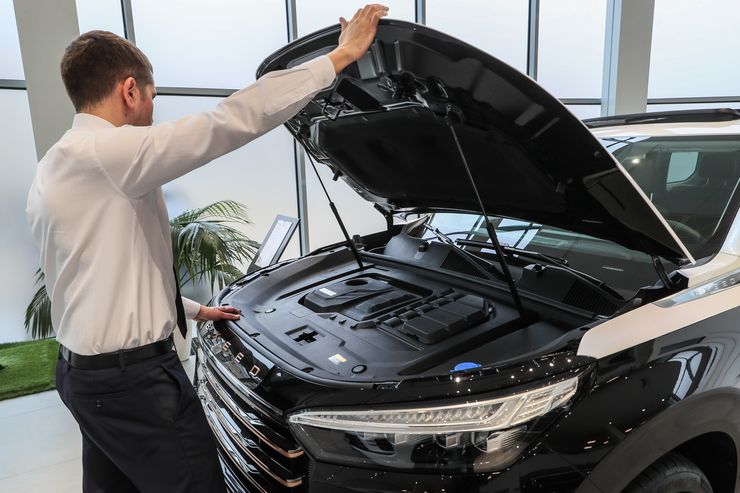Is extra thermal material under the hood of a car dangerous?
- December 14, 2023
- 0
If previous drivers in the cold would put cardboard or an old folded peacoat under the radiator grille, now nothing has been invented to quickly start the engine
If previous drivers in the cold would put cardboard or an old folded peacoat under the radiator grille, now nothing has been invented to quickly start the engine

The power plant in a car devotes its performance not only to the traction properties and supporting energy consumers, in collaboration with the battery, generator and other components, but also to the optimal operation of the cooling system. This protects the motor from possible overheating.
And the higher the outside temperature, the greater the load the device experiences. To put it even more simply, the engine’s heat transfer increases, forcing it to spend more energy on its own cooling. Why, you might ask, would you make the situation worse by installing a special thermal material under the hood?
Meanwhile, car builders, together with car owners, themselves practice thermal insulation of the engine compartment, “arming” the hood lid with an insulation mat. True, not all – such an option is usually considered the prerogative of models of the premium segment. But what is it actually needed for? That’s right: in the cold season the engine has a hard time, and maintaining the operating temperature range when the engine is often turned off is quite difficult.
And warming the engine to the same 90 degrees in winter takes much longer. Therefore, car manufacturers install heat-insulating materials in the engine compartment, allowing the power unit and its associated components to retain heat for longer without temperature loss. In addition, the thermal layer serves as additional sound insulation, effectively suppressing the noise entering the cabin due to the operation of the engine.
The inside of the hood resonates with the hum of the engine and the installed mats absorb this well. Owners of cars without thermal insulation materials in the engine compartment, which the manufacturer decided not to integrate there, fill this gap themselves. Fortunately, today it’s easier than ever to buy them. How to actually install it.
It will be quieter and warmer. And especially advanced drivers additionally wrap the battery in a special thermal protective cover, which protects the battery from “supercooling”. By the way, there are similar types of protective covers for the radiator. In general, put it on – I don’t want it.

The power plant in a car devotes its performance not only to the traction properties and supporting energy consumers, in collaboration with the battery, generator and other components, but also to the optimal operation of the cooling system. This protects the motor from possible overheating.
And the higher the outside temperature, the greater the load the device experiences. To put it even more simply, the engine’s heat transfer increases, forcing it to spend more energy on its own cooling. Why, you might ask, would you make the situation worse by installing a special thermal material under the hood?
Meanwhile, car builders, together with car owners, themselves practice thermal insulation of the engine compartment, “arming” the hood lid with an insulation mat. True, not all – such an option is usually considered the prerogative of models of the premium segment. But what is it actually needed for? That’s right: in the cold season the engine has a hard time, and maintaining the operating temperature range when the engine is often turned off is quite difficult.
And warming the engine to the same 90 degrees in winter takes much longer. Therefore, car manufacturers install heat-insulating materials in the engine compartment, allowing the power unit and its associated components to retain heat for longer without temperature loss. In addition, the thermal layer serves as additional sound insulation, effectively suppressing the noise entering the cabin due to the operation of the engine.
The inside of the hood resonates with the hum of the engine and the installed mats absorb this well. Owners of cars without thermal insulation materials in the engine compartment, which the manufacturer decided not to integrate there, fill this gap themselves. Fortunately, today it’s easier than ever to buy them. How to actually install it.
It will be quieter and warmer. And especially advanced drivers additionally wrap the battery in a special thermal protective cover, which protects the battery from “supercooling”. By the way, there are similar types of protective covers for the radiator. In general, put it on – I don’t want it.
Source: Avto Vzglyad
Donald Salinas is an experienced automobile journalist and writer for Div Bracket. He brings his readers the latest news and developments from the world of automobiles, offering a unique and knowledgeable perspective on the latest trends and innovations in the automotive industry.